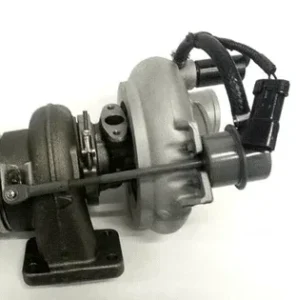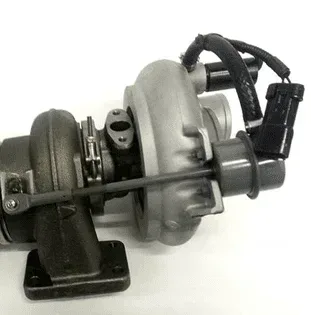Dodge RAM Turbocharger

The turbocharger is an exhaust-driven supercharger which increases the pressure and density of the air entering the engine. With the increase of air entering the engine, more fuel can be injected into the cylinders, which creates more power during combustion. The turbocharger assembly consists of eight (8) component systems : 1 - Turbine section 2 - Exhaust stream into turbine 3 - Bearing housing 4 - Compressor housing 5 - Clean air inlet 6 - Compressor section 7 - Exhaust stream into turbine 8 - Exhaust gas to Exhaust Pipe The turbocharger wastegate assembly consists of two major component systems : 1 - Command Passage 2 - Electronically controlled wastegate command valve
DODGE TURBO DIESEL, DIAGNOSIS, AND TESTING TURBOCHARGER BOOST PRESSURE
Low turbocharger boost pressure can cause poor engine performance and driveability concerns. The following procedure will test the turbocharger boost pressure. Causes of low boost pressure include the following: * Restricted air inlet system * Leak in charge air cooler system * Restricted/high-pressure drop across charge air cooler * Damaged turbocharger compressor wheel housing * Turbocharger wastegate stuck open * Excessive exhaust restriction Causes of excessively high boost pressure include: * Turbocharger wastegate stuck closed * Turbocharger wastegate signal line leaking or damaged * Damaged wastegate command valve O-rings * Wastegate command valve mechanically stuck in actuated position Several Diagnostic Trouble Codes (DTCs) can be set that will indicate high or low system boost levels. There is a DTC for circuit faults relating to the electronically controlled wastegate command valve. (Refer to 11 - EXHAUST SYSTEM/TURBOCHARGER SYSTEM/CHARGE AIR COOLER AND PLUMBING - DIAGNOSIS AND TESTING) for diagnosing of low or high boost pressure due to leaks. NOTE: If oil is present on either the inlet or exhaust side of the turbocharger, check the charge air cooler for evidence of oil. Clean charge air cooler of any oil before starting the engine. Failure to do this can result in severe engine damage.


